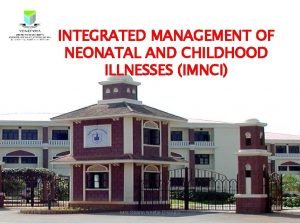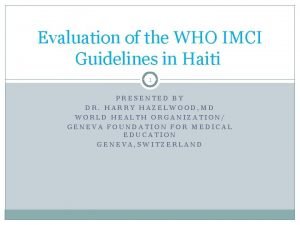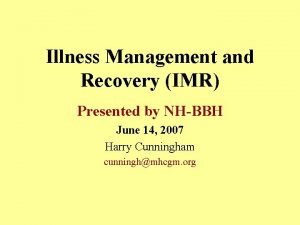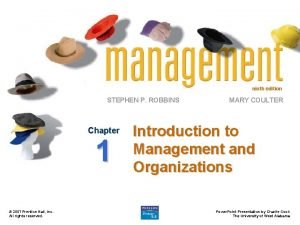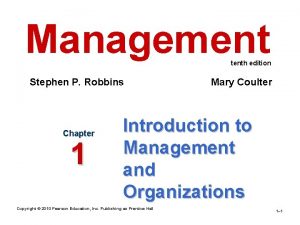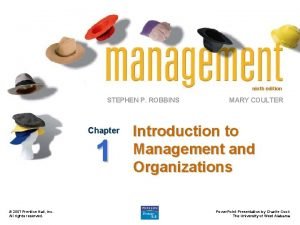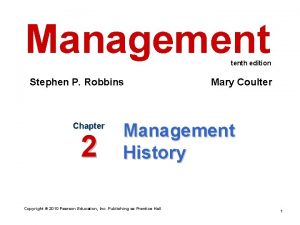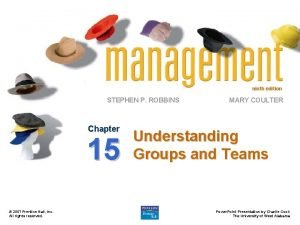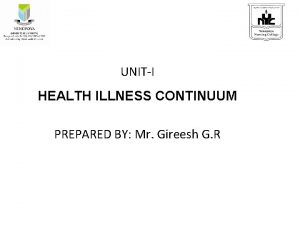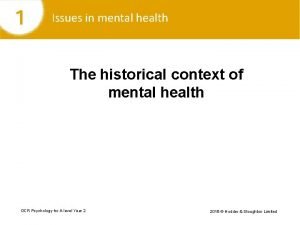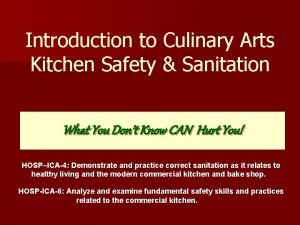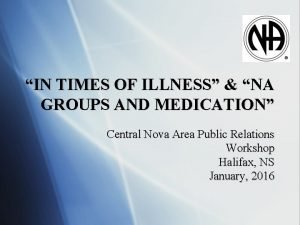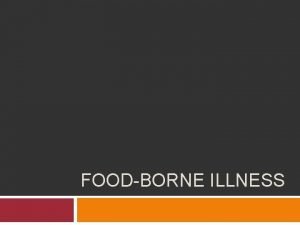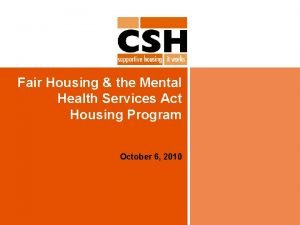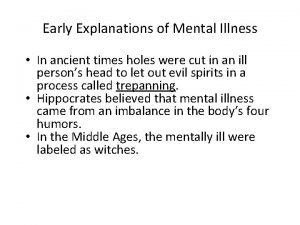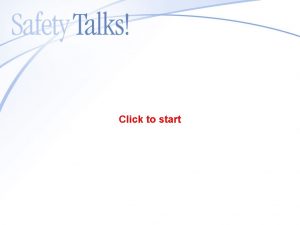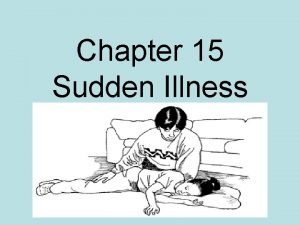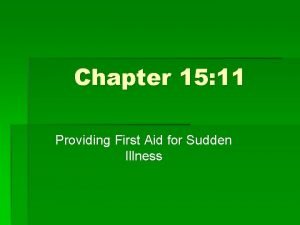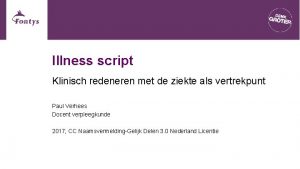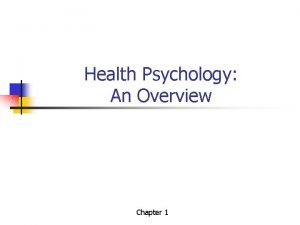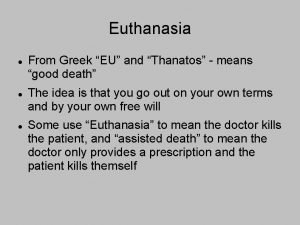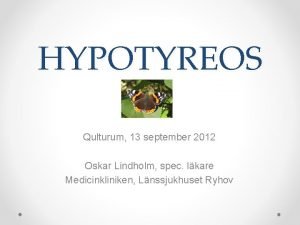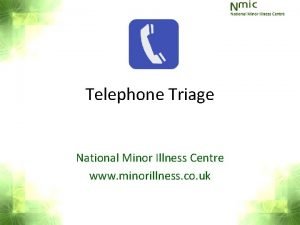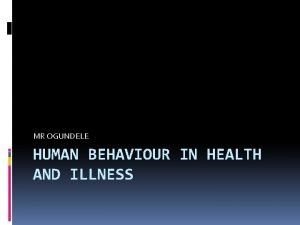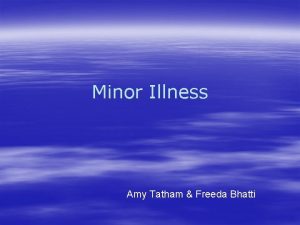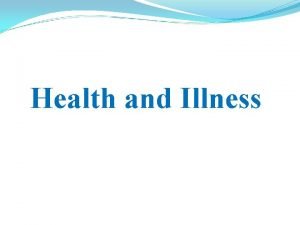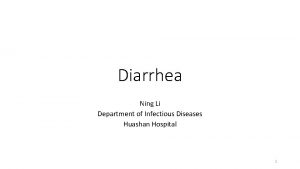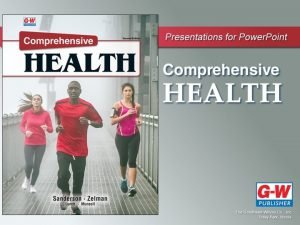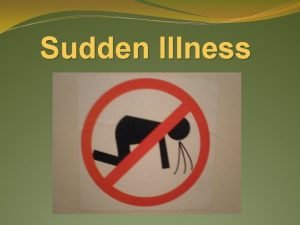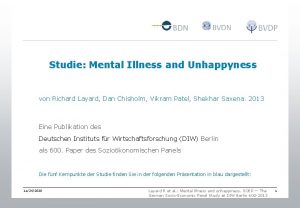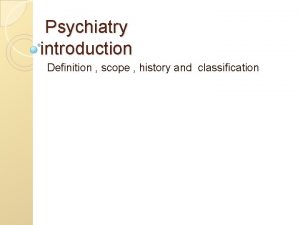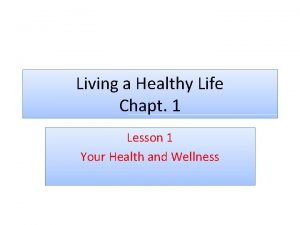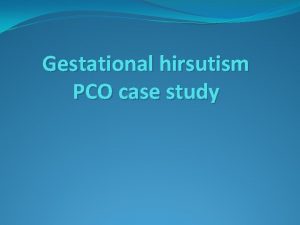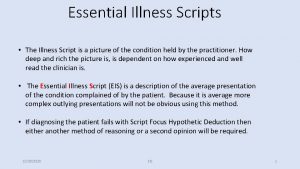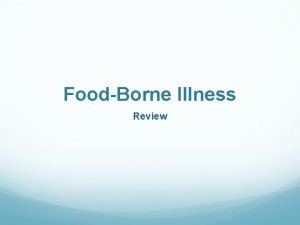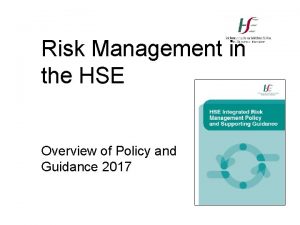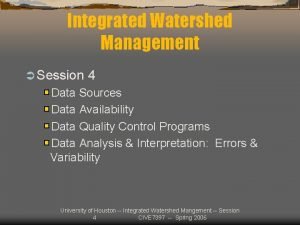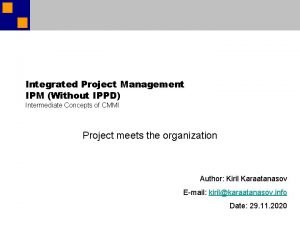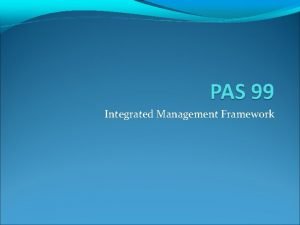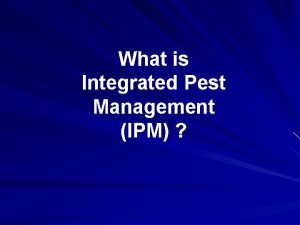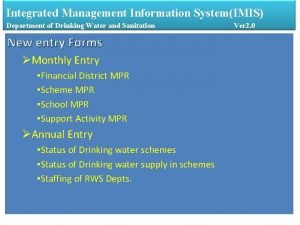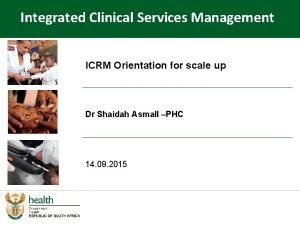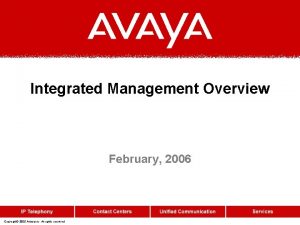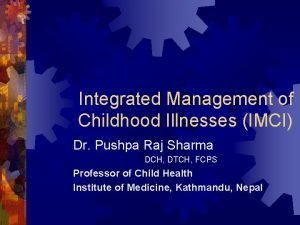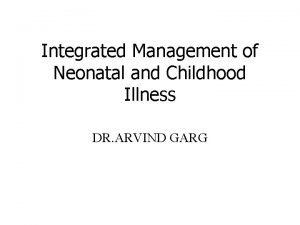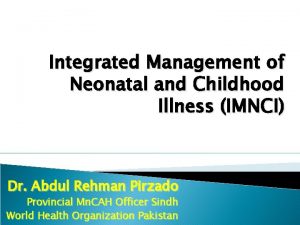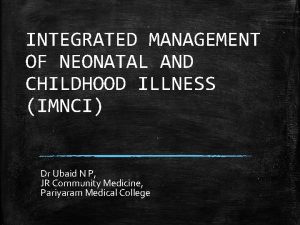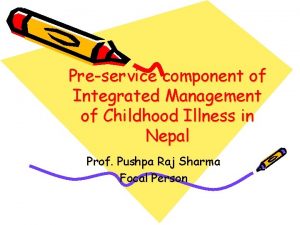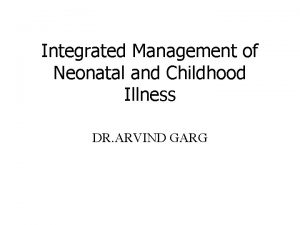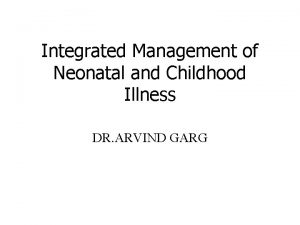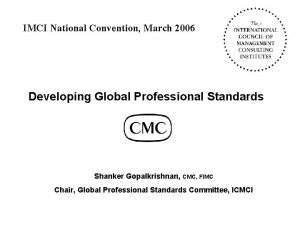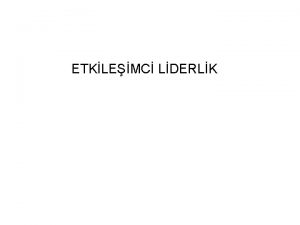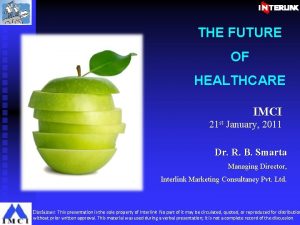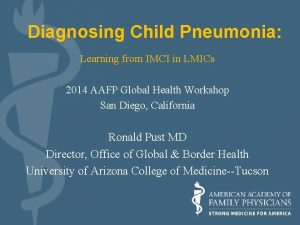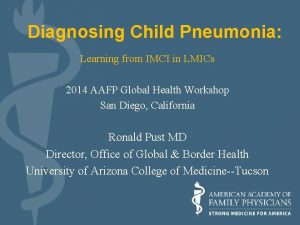Integrated Management of Childhood Illness IMCI Stephen P

















































































- Slides: 81

Integrated Management of Childhood Illness (IMCI) Stephen P. Merry, MD, MPH, DTM&H Assistant Professor of Family Medicine Mayo Clinic, Rochester © 2013 MFMER | slide-1

Disclosures • Financial Disclosures • None • Off label drug use • None 2 © 2013 MFMER | slide-2

Learning Objectives • Gain familiarity with IMCI • Epidemiology of diseases treated • Structure & method of integrated care • Treatment protocols • Build capacity in medical missions rather than duplicate (or undermine) MOH efforts • Complement WHO and UNICEF initiatives • Begin or support a community health program • Affirm or challenge appropriately treatment protocols by CHW’s referring to your facility 3 © 2013 MFMER | slide-3

Background: • Problem • Lots of kids are dying in LMIC • Two-thirds of deaths preventable* • Lack of access to health care in LMIC • Lack of workers • Lack of patient transport, money, awareness of potential benefit • Many other determinants… *Jones, Lancet, 2003 © 2013 MFMER | slide-4

Background: • Problems (Determinants of Child Mortality) • Inequity • Lack of maternal education • Lack of access to care • Rural residence • Conflict/War/Disaster • Debt • Structural Adjustment Policies • Worldview © 2013 MFMER | slide-5

Background: • Solution (what we can do) • Increase workers • More paraprofessionals • Community health workers • Low cost • In community • Longitudinal care/follow up © 2013 MFMER | slide-6

DO NOT USE THIS TALK IN ISOLATION • Listen to Terry Dalrymple’s talk (breakout session 1: 30 pm Friday) on community health evangelism • I agree with every word he said. • IMCI is a naturalistic construct the content of which CHE and other community based primary care initiatives can build. © 2013 MFMER | slide-7

© 2013 MFMER | slide-8

Good News • Progress towards achieving MDG 4. • Under-five deaths worldwide declined from 12. 6 million in 1990 to 6. 6 million in 2012. • Translates into around 17, 000 fewer children dying every day in 2012 than in 1990. • Still implies the deaths of nearly 18, 000 children under age five every day in 2012. UN-IGME, Levels and Trends in Child Mortality, 2013. © 2013 MFMER | slide-9

UN-IGME, Levels and Trends in Child Mortality, 2013. © 2013 MFMER | slide-10

Where The 7 Million Children Are Dying Each Year… http: //www. worldmapper. org/posters/worldmapper_map 261_ver 5. pdf Accessed 10/11/10 © 2013 MFMER | slide-11

Where “Physicians” Work http: //www. worldmapper. org/display. php? selected=219 Accessed © 201310/11/10. MFMER | slide-12

www. gapminder. org; downloaded in 2011 sometime… © 2013 MFMER | slide-13

We Are Making Progress… Institute of Medicine. The U. S. Commitment to Global Health: Recommendations for the New Administration Committee on the U. S. Commitment to Global Health. 2009. © 2013 MFMER | slide-14

http: //www. un. org/millenniumgoals Video MDG’s © 2013 MFMER | slide-15

Why Be Involved Institute of Medicine. The U. S. Commitment to Global Health: Recommendations for the New Administration Committee on the U. S. Commitment to Global Health. 2009. © 2013 MFMER | slide-16

Why Be Involved Institute of Medicine. The U. S. Commitment to Global Health: 17 Recommendations for the New Administration Committee on the U. S. Commitment to Global Health. 2009. © 2013 MFMER | slide-17

Why Be Involved Institute of Medicine. The U. S. Commitment to Global Health: Recommendations for the New Administration Committee on the U. S. Commitment to Global Health. 2009. © 2013 MFMER | slide-18

29 © 2013 MFMER | slide-19

www. who. int/pmnch/media/press_materials/fs/fs_mdg 4_childmortality/en/ Accessed Oct 24, 2013 © 2013 MFMER | slide-20

© 2013 MFMER | slide-21

© 2013 MFMER | slide-22

© 2013 MFMER | slide-23

Trends in Intervention Delivery in Child Health 1950’s • Mass campaigns—small pox eradication • Primary Health Care (PHC)—comprehensive, intersectoral, prevention and treatment services, district hospital at the hub, community participation • Selective PHC (SPHC)—focus on a few problems-GOBI 1990’s • HIV, malaria, TB • Integrated Management of Childhood Illnesses (IMCI) • Integrated care — viewing individual as a whole, comprehensive care of individuals © 2013 MFMER | slide-24

Integrated Management of Childhood Illnesses (IMCI) • Strategy of World Health Organization (WHO) and United Nations Children's Fund (UNICEF) • Goal: improve child survival in resource poor settings via integrated approach • reduce death, illness and disability, and promote growth and development • preventive and curative elements • implemented by families, communities and health facilities Tulloch, Lancet, 1999 © 2013 MFMER | slide-26

WHO’s Integrated Management of Childhood Illness • Preventive interventions • Immunizations • Breastfeeding support • Nutrition counseling (e. g. weaning foods) • Curative interventions Cause 70% of • Malaria childhood • Pneumonia deaths • Diarrheal illnesses worldwide • Undernutrition (co-factor in 1/3) • Also…serious infections (meningitis), other illnesses (vitamin A def. with measles) © 2013 MFMER | slide-27

Features of IMCI • Inexpensive • Integrated management • Not just disease treatment but promote health and well being of the child • Careful assessment of common symptoms and signs to guide rational action © 2013 MFMER | slide-29

Features of IMCI • Manages most common diseases (pneumonia, diarrhea, measles, malaria, dengue, malnutrition, anemia, ear problems) • Includes preventive interventions • Adjusts curative interventions to the capacity and function of the health system • Involves family and community in the process © 2013 MFMER | slide-30

Training of IMCI Workers: Initiation Use these training materials: http: //www. who. int/maternal_child_adolescent/do cuments/9241595650/en/ Or this computerized one: http: //www. who. int/maternal_child_adolescent/do cuments/icatt/en/index. html And THE flip chart: http: //whqlibdoc. who. int/publications/2008/97892 41597289_eng. pdf © 2013 MFMER | slide-31

Training IMCI PHC Workers • Structured training course developed by WHO, • Extensive learning materials • Chart booklet containing all the IMCI guidelines - desk reference. • 11 days of training • classroom work • hands-on clinical practice • competency by repetition • formative feedback from facilitators Bull WHO, 1997 © 2013 MFMER | slide-32

Training IMCI PHC Workers • Course director • A detailed guide means content and activities largely consistent between different training sites and countries. • All IMCI trained health workers receive at least one follow-up visit in their own health facility after training, to reinforce their skills and solve implementation problems Lambrechts, Bull WHO, 1997 © 2013 MFMER | slide-33

Training IMCI PHC Workers • IMCI facilitators • Chosen on the basis of their performance, • Attend an additional 5 - day IMCI facilitators training course. • Goal = one facilitator for every four participants Bull WHO, 1997 © 2013 MFMER | slide-34

IMCI Component 1: Improves Health Worker Skills • Targets first level health facilities • Training • Case management guidelines for the causes of at least 70% of deaths • Supervision • Monitoring © 2013 MFMER | slide-35

IMCI Component 2: Improves Family and Community Practices • Community participation • Preventive care • Immunization • Breast-feeding and other nutritional counseling • Home care of sick children • Recognition of severe illness • Care-seeking behavior © 2013 MFMER | slide-36

IMCI Component 3: Improves Health Systems • Planning and Management • Availability of drugs and supplies • Organization of work • Monitoring and supervision • Referral pathways and systems • Health information systems © 2013 MFMER | slide-37

Objectives of IMCI • Reduce deaths and frequency and severity of illness and disability • Contribute to improved growth and development © 2013 MFMER | slide-38

The Integrated case management process Outpatient health facility -Check for danger signs -Assess main symptoms - assess nutrition and immunization status and potential feeding problems - Check for other problems - Classify conditions -Identify treatment actions Outpatient health facility Urgent referral -pre-referral treatment -Advise parents -Refer child Outpatient health facility -Treatment - treat local infection - give oral drugs - advise and teach caretaker -Follow up HOME -Caretaker is counseled on home treatment -Feeding & fluids -When to return immediately -Follow up Referral facility -Emergency triage and treatment -Diagnosis and treatment -Monitoring and follow up © 2013 MFMER | slide-39

www. who. int/pmnch/media/press_materials/fs/fs_mdg 4_childmortality/en/ Accessed Oct 24, 2013 © 2013 MFMER | slide-40

Basic Resuscitation Equipment • Warm room • Two pieces of cloth • Dry • Wrap up • Suction bulb or De. Lee • Positive Pressure Bag (“Ambu”) and mask From Tina Slusher, MD with gratitude © 2013 MFMER | slide-41

20 -30 seconds ONLY!! Is my baby breathing? Is my baby breathing well? IF no to either Only after 30 seconds of PPV with a HR < 60 Mostly NRP/ PALS* © 2013 MFMER | slide-42

© 2013 MFMER | slide-43

www. who. int/pmnch/media/press_materials/fs/fs_mdg 4_childmortality/en/ Accessed Oct 24, 2013 © 2013 MFMER | slide-44

Neonatal Sepsis • Any deviation from normal in neonate can be sepsis: • temperature, • ( WBC, glucose) • Vomiting • Feeding intolerance • Lethargy • Respiratory distress beyond 1 st hour • Amp/Gent IV © 2013 MFMER | slide-45

www. who. int/pmnch/media/press_materials/fs/fs_mdg 4_childmortality/en/ Accessed Oct 24, 2013 © 2013 MFMER | slide-46

Diarrhea Deaths Per Year • United States: 6, 000 • Developing world: 1. 5 to 2 million (children < 5 years old) World Gastroenterology Organization (WGO) Practice Guideline Acute Diarrhea (March 2008) © 2013 MFMER | slide-47

Preventing Diarrhea Deaths • Spread • water, food, utensils, hands, flies • Deaths • dehydration (water loss) • electrolytes/salts loss (sodium, potassium, bicarbonate) World Gastroenterology Organization (WGO) Practice Guideline Acute Diarrhea (March 2008) © 2013 MFMER | slide-48

Lack of access to safe drinking water © 2013 MFMER | slide-49

Access to Improved Sanitation Facilities http: //www. childinfo. org/sanitation_status_trends. html © 2013 MFMER | slide-50

Differentiating Diarrhea • Watery stool • Secretory • Cholera, Viral, Giardia • Bloody stool, tenesmus • Inflammation • Fever: Bacillary dysentery • No Fever: Amebiasis (Rx Flagyl) World Gastroenterology Organization (WGO) Practice Guideline Acute Diarrhea (March 2008) © 2013 MFMER | slide-51

If the gut works, use it © 2013 MFMER | slide-52

Oral rehydration solution (ORS) Rice-based ORS is superior to glucose-based ORS in patients with cholera World Gastroenterology Organization (WGO) Practice Guideline Acute Diarrhea (March 2008) © 2013 MFMER | slide-53

Treatment Acute Diarrhea • Zinc supplementation • Given during acute diarrhea episode reduces duration and severity of episode • Given for 10 -14 days reduces incidence of diarrhea in following 2 -3 months • Selective use of antibiotics • Dysentery © 2013 MFMER | slide-54

½ of deaths due in part to undernutrition www. who. int/pmnch/media/press_materials/fs/fs_mdg 4_childmortality/en/ Accessed Oct 24, 2013 © 2013 MFMER | slide-55

Impact of Breastfeeding on Childhood Disease Risk in not BF vs exclusively BF Diarrhea 7 x risk death Pneumonia 5 x risk death © 2013 MFMER | slide-56

Under-Nutrition Vitamin A Deficiency 20 -24% Risk of death from diarrhea, measles AL Rice et al In: Comparative quantification of health risks, 2004 © 2013 MFMER | slide-57

Vitamin A • Give to child every 6 months or with measles or malnutrition • Helps resist measles virus infection in the eye and lining of lungs, gut, mouth and throat • Prevents corneal clouding © 2013 MFMER | slide-58

www. who. int/pmnch/media/press_materials/fs/fs_mdg 4_childmortality/en/ Accessed Oct 24, 2013 © 2013 MFMER | slide-68

Cough or Difficulty of Breathing How IMCI Works… © 2013 MFMER | slide-69

Cough or Difficulty of Breathing • One of the most common infections among children • May be pneumonia or a less serious respiratory infection • Strep. pneumoniae is the most common bacterial cause • Children can die from hypoxia or sepsis • Check for fast breathing and chest indrawing to identify very sick children © 2013 MFMER | slide-70

Cough or Difficulty of Breathing SIGNS • Any general danger sign or • Chest indrawing or Stridor in a clam child Fast breathing No signs of pneumonia or very severe disease CLASSIFY AS SEVERE PNEUMONIA OR VERY SEVERE DISEASE IDENTIFY TREATMENT • Give first dose of an appropriate antibiotic • Refer URGENTLY to a hospital PNEUMONIA • Give an appropriate oral antibiotic for 5 days • Soothe throat and releive the cough with a safe remedy • Advise mother when to return immediately • Follow-up in 2 days NO PNEUMONIA, COUGH OR COLD If coughing >30 days refer for assessment • Soothe throat and relieve the cough with a safe remedy • Advise mother when to return immediately • Follow-up in 6 days if not improving © 2013 MFMER | slide-71

WHO IMCI • Cough • Increased respiratory rate • ≥ 60 if age < 2 mos. • ≥ 50 if age 2 -12 mos. • ≥ 40 if age 12 mos. to 5 years = Pneumonia • Lower chest retractions • (Fever) • Case management can reduce pneumonia associated childhood mortality by 40% S Sazawal, et al Lancet 2003 © 2013 MFMER | slide-72

Cough or Difficulty of Breathing Ask: does the child have cough or difficulty breathing? üIf no, ask the next main üIf yes, ask: for how long? symptoms: diarrhea, fever, LOOK LISTEN FEEL: ear problems • count the breaths in one minute If the child is: fast breathing is: • look for chest 2 -12 months 50 bpm or more indrawing 1 -5 years 40 bpm or more • look and listen for stridor CLASSIFY © 2013 MFMER | slide-73

Treatment Soothe throat, relieve the cough with a safe remedy • Safe remedies to recommend: • Breast milk for exclusively breastfed infant; tamarind, calamines, ginger • Harmful remedies to discourage: • Codeine cough syrup • Other cough syrups • Oral and nasal decongestants © 2013 MFMER | slide-74

Treatment for Pneumonia or Very Severe Disease Cotrimoxazole Give 2 times daily for 5 days Age or Weight 2 -12 mos (4 -10 kg) Amoxicillin Give 3 times daily for 3 -5 days Adult tab. 80 mg TMP 400 mg SMX Syrup 40 mg TMP 200 mg SMX Tablet 250 mg Syrup 125 mg/5 m. L 1/2 5. 0 m. L 7. 5 m. L 1 10 m. L 12 mos – 5 yrs 1 (10 -19 kg) © 2013 MFMER | slide-75

Empyema © 2013 MFMER | slide-76

Pneumonia: Prevention • Immunization (measles, pertussis) • Pneumococcal, H influenza soon - $$$$ • Nutrition • Exclusive breastfeeding / appropriate complementary feeding • Vit A and Zinc through diet / supplementation • Avoidance of indoor air pollution • E. g. , Unprocessed household solid fuels (wood, dung, coal) 1. 8 x increased risk of pneumonia © 2013 MFMER | slide-77

www. who. int/pmnch/media/press_materials/fs/fs_mdg 4_childmortality/en/ Accessed Oct 24, 2013 © 2013 MFMER | slide-78

Vaccine Coverage © 2013 MFMER | slide-79

Using IMCI © 2013 MFMER | slide-80

Using IMCI © 2013 MFMER | slide-81

© 2013 MFMER | slide-82

Using IMCI • Peruse the paper (few minutes) • Think about patients you’ve received from dispensaries • Think about your own community health program (existing or future) • Flip chart here: http: //whqlibdoc. who. int/publications/2008/9789 241597289_eng. pdf © 2013 MFMER | slide-83

Does IMCI Work? • Evaluation in 5 countries (Bryce, AJPH, 2004) • Showed improvements in health worker performance following IMCI training • More likely to prescribe correct treatments • Communicated better with carers • Take longer but still more efficient • Cost less than routine care in some settings (Adam, Bull WHO, 2005) © 2013 MFMER | slide-84

© 2013 MFMER | slide-85

How Are IMCI Trained Workers Doing? • Absolute levels of health worker performance often poor. • Uganda, less than half of children received correct treatment (Pariyo, 2004), • Peru, as low as 10% received correct treatment (Huicho, 2005). • Tanzania (one of the most successful implementation sites ) there was considerable room for improvement (Armstrong, 2004) © 2013 MFMER | slide-86

Monitoring, Evaluation and Support • My Recommendations: • Use the IMCI protocols for your community health program. • Train your village health workers in them. • Vary from the protocol only with very good reasons • Be sure the VHW’s all understand any variations so they can tell colleagues (or the regional public health officer) why. • Use them in your clinics for your nurses/techs/NP/PA’s. © 2013 MFMER | slide-87

Monitoring, Evaluation and Support • My Recommendations: • Train many but maintain constant contact • Regular phone calls - availability for discussion of cases, review of morbidity/mortality when visiting their post • Text reminders • Virtual consults • Resourcing - medications, supplies, books/texts to supplement, conferences to refresh training. • Close supervision improves performance* *Chaudhary, 2005 © 2013 MFMER | slide-88

Monitoring, Evaluation and Support • My Recommendations: • Focus on consistent errors • Treatment of diseases • Why did they vary from the protocol • Patient and community expectations • Costs • Availability of meds/supplies © 2013 MFMER | slide-89

Training of IMCI Workers: Follow up Use this manual: • http: //whqlibdoc. who. int/hq/1999/WHO_FCH_ CAH_99. 1 B. pdf © 2013 MFMER | slide-90

Learning Objectives • Gain familiarity with IMCI • Epidemiology of diseases treated • Structure & method of integrated care • Treatment protocols • Build capacity in medical missions rather than duplicate (or undermine) MOH efforts • Complement WHO and UNICEF initiatives • Begin or support a community health program • Affirm or challenge appropriately treatment protocols by CHW’s referring to your facility 91 © 2013 MFMER | slide-91

Questions & Discussion © 2013 MFMER | slide-92
 Imnci
Imnci Disadvantages of imci
Disadvantages of imci Middle
Middle Illness management and recovery worksheet
Illness management and recovery worksheet Management 9th edition by stephen p robbins
Management 9th edition by stephen p robbins Features of management
Features of management Principles of management by stephen robbins 13th edition
Principles of management by stephen robbins 13th edition Robbins and coulter 2007
Robbins and coulter 2007 Management stephen robbins 10th edition
Management stephen robbins 10th edition Management eleventh edition
Management eleventh edition Stephen p robbins management 15th edition pdf
Stephen p robbins management 15th edition pdf Eleventh edition management
Eleventh edition management Management robbins coulter
Management robbins coulter Management eleventh edition
Management eleventh edition Conclusion of mental hygiene
Conclusion of mental hygiene History of present illness example
History of present illness example Historical views of mental illness psychology ocr
Historical views of mental illness psychology ocr Food borne illness poster
Food borne illness poster Narcotics anonymous in times of illness
Narcotics anonymous in times of illness Foodborne illness vocabulary
Foodborne illness vocabulary Fair housing act mental illness
Fair housing act mental illness Foodborne illness
Foodborne illness Mental illness in ancient times
Mental illness in ancient times Eudemonistic model
Eudemonistic model Stages of heat illness
Stages of heat illness Mental health and mental illness chapter 20
Mental health and mental illness chapter 20 Axis 1 and axis 2 disorders
Axis 1 and axis 2 disorders Chapter 17:2 performing cardiopulmonary resuscitation
Chapter 17:2 performing cardiopulmonary resuscitation Sudden illness definition
Sudden illness definition Chapter 15:1 providing first aid
Chapter 15:1 providing first aid Mark rothko mental illness
Mark rothko mental illness Chief complaint of patient
Chief complaint of patient Mike mazzalongo illness
Mike mazzalongo illness Trustmark critical illness
Trustmark critical illness Dr. craig jackson
Dr. craig jackson Toekomst colitis ulcerosa
Toekomst colitis ulcerosa Illness and wellness continuum
Illness and wellness continuum Accidents/illness of family members
Accidents/illness of family members Thanatos illness artinya
Thanatos illness artinya Hypotyreos typ 2
Hypotyreos typ 2 Catherine earnshaw mental illness
Catherine earnshaw mental illness Americanization of mental illness
Americanization of mental illness National minor illness centre
National minor illness centre Edward suchman stages of illness
Edward suchman stages of illness Minor illness definition
Minor illness definition Helen keller illness
Helen keller illness Mental health jeopardy questions and answers
Mental health jeopardy questions and answers What is health?
What is health? Nabati meaning tagalog
Nabati meaning tagalog Ning li illness
Ning li illness Foodborne illness
Foodborne illness Chief complaint present illness
Chief complaint present illness Eye illness
Eye illness Illness script
Illness script Providing safe food
Providing safe food Dextrum genus
Dextrum genus Classification of mental illness
Classification of mental illness Continuum of health
Continuum of health History of present illness example
History of present illness example Illness script
Illness script Enzo calzaghe illness
Enzo calzaghe illness Ksi depression
Ksi depression Improving chronic illness care model
Improving chronic illness care model Fifo is a foodborne illness
Fifo is a foodborne illness Integrated logistics management
Integrated logistics management Iplast
Iplast Hse risk management framework
Hse risk management framework Integrated watershed management
Integrated watershed management University management system dbms project
University management system dbms project Integrated talent management scorecards
Integrated talent management scorecards What is integrated service management
What is integrated service management Cmmi ipm
Cmmi ipm Pas 99 adalah
Pas 99 adalah Enterprise wide quality integrated management system
Enterprise wide quality integrated management system Pest management learning
Pest management learning Integrated education management system
Integrated education management system Power management integrated circuits
Power management integrated circuits Integrated management information system imis
Integrated management information system imis Integrated clinical services management
Integrated clinical services management Integrated brand management
Integrated brand management Integrated engineering management system
Integrated engineering management system Avaya integrated management site administration
Avaya integrated management site administration
